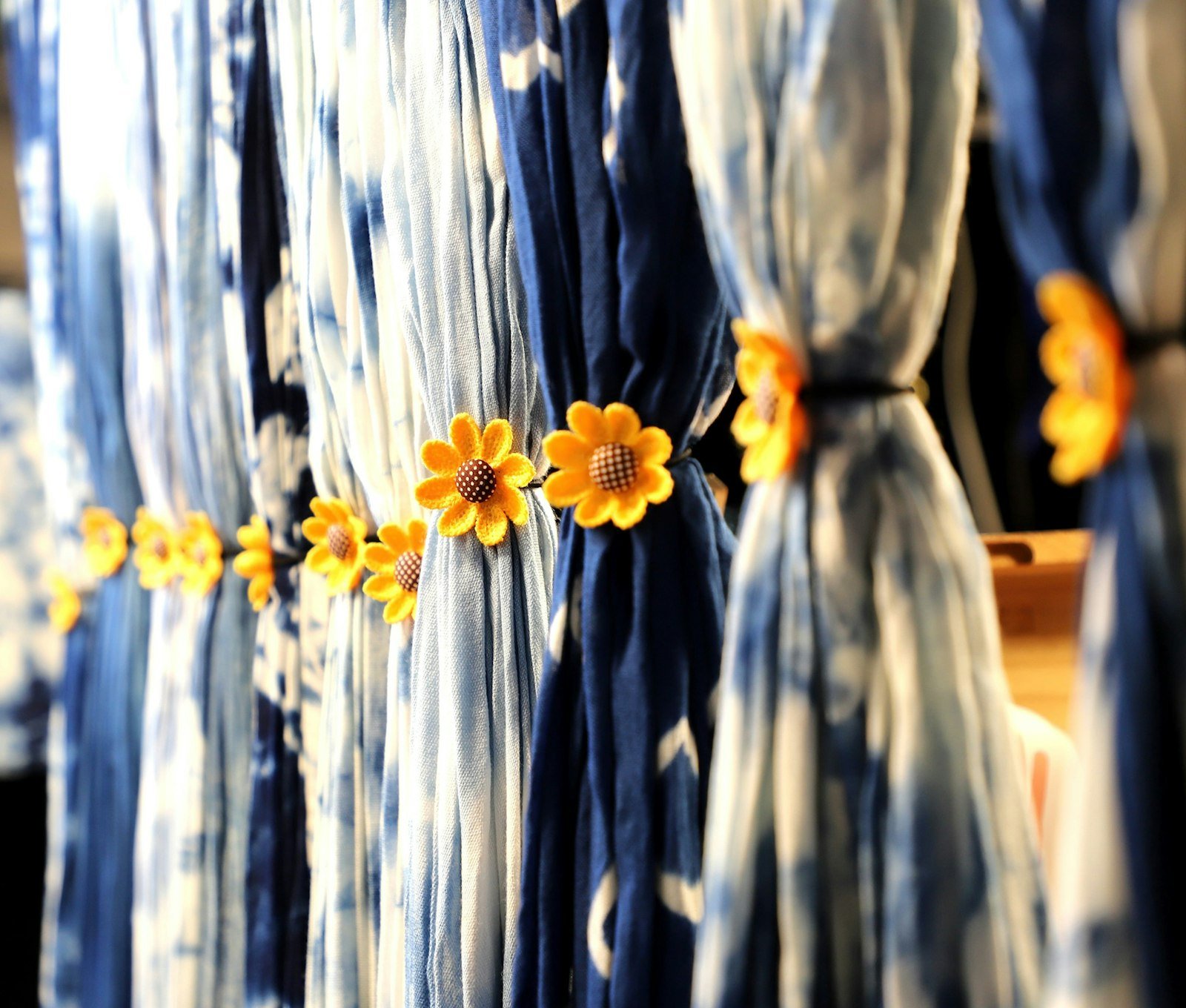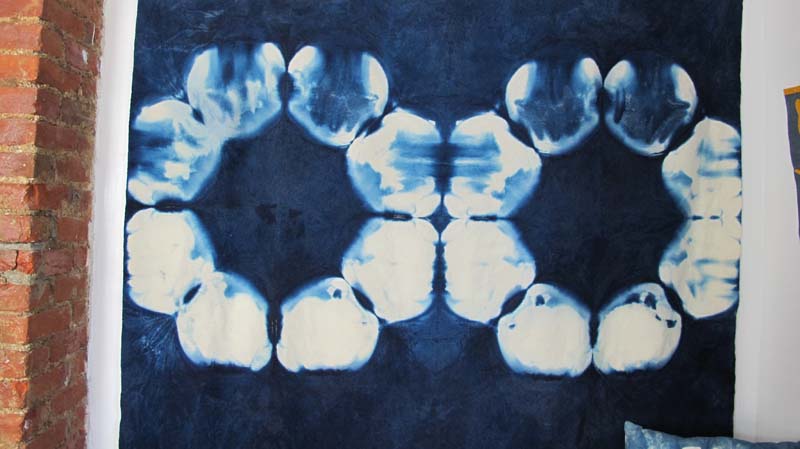I am proud to say that my daughter is the tie-dye princess of the universe. We have attended a family camp every summer since our kids were small, and one of the favorite activities there is tie-dyeing. The process starts on Tuesday and by the end of the week, the orchard behind the art building has clotheslines on every tree full of bright T-shirts, scarves, dresses, napkins, baby clothes, underwear . . . you name it! It is as if the Grateful Dead color fairy or the ghost of Jerry Garcia had come through in the night and decorated the great outdoors. Exposed to tie-dyeing almost from infancy, my daughter has proven to have a natural talent for gorgeous patterns and beautiful color combinations. When she got her own kitchen, she began to make amazing tie-dye cupcakes—fun food in colors that nature never intended.
Arashi shibori patterns look like rain on a windowpane.
Several years ago, I met another young woman with an amazing talent for dyeing. Elizabeth McTear is an artist from Philadelphia who was teaching in residence at a university near my home in Oregon. But instead of creating the psychedelic patterns and colors beloved by my daughter, Beth is a passionate natural dyer making and selling gorgeous fabrics for home décor. Beth is constantly experimenting with natural dyestuffs, growing indigo, coreopsis, and other dye plants in her Germantown backyard to yield colors that nature very much intended. For her professional work, she uses earth-friendly commercial dyes for Japanese shibori techniques: serene arashi patterns like rain on a windowpane or ripples in sand, and itajime, the fold-and-clamp technique that creates striking geometric designs.
A striking itajime shibori panel in indigo.
Beth’s art is compelling, and her passion for earth-friendly techniques is infectious, so off to Philadelphia we went last year to bring her techniques to video. If you are interested in a very natural way to add a new dimension to your fiber art and serenity to the fabrics in your life, check out Beth’s videos on arashi and itajime shibori techniques and indigo dyeing. I plan to give copies to my daughter. I’m sure indigo isn’t edible, but I can’t wait to see her come up with shibori cupcakes.
Happy creating,
Anita



